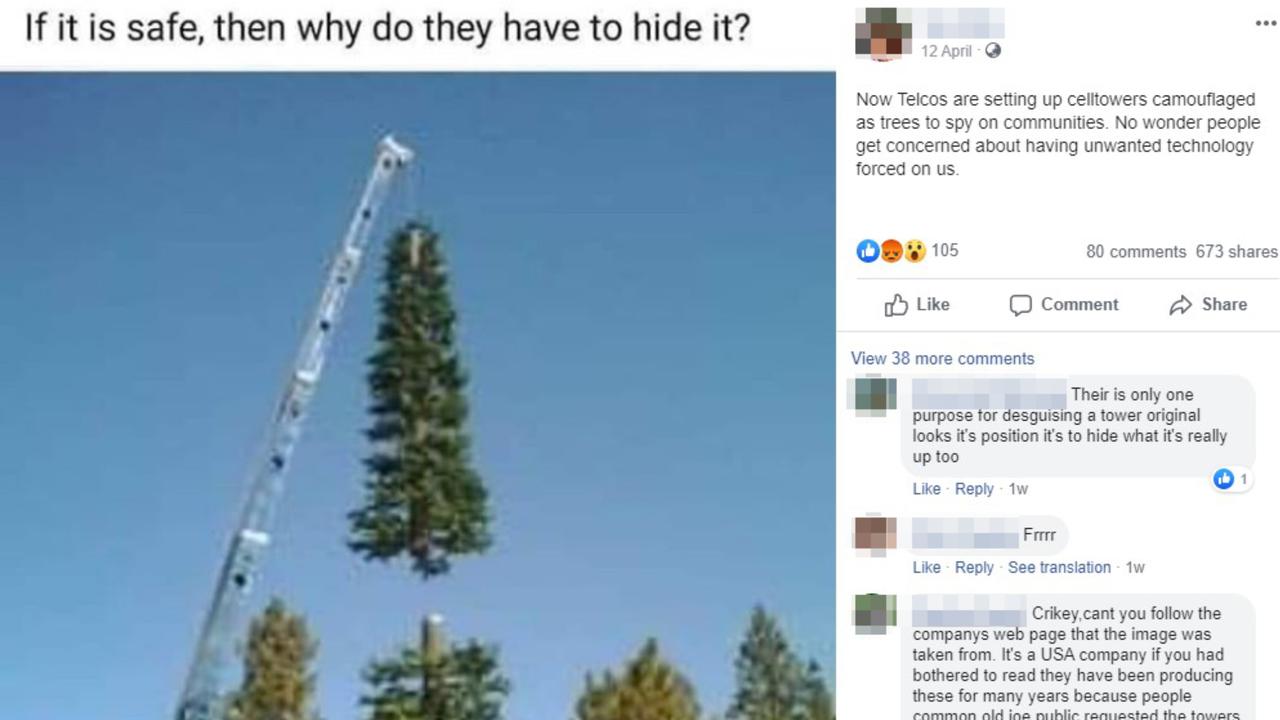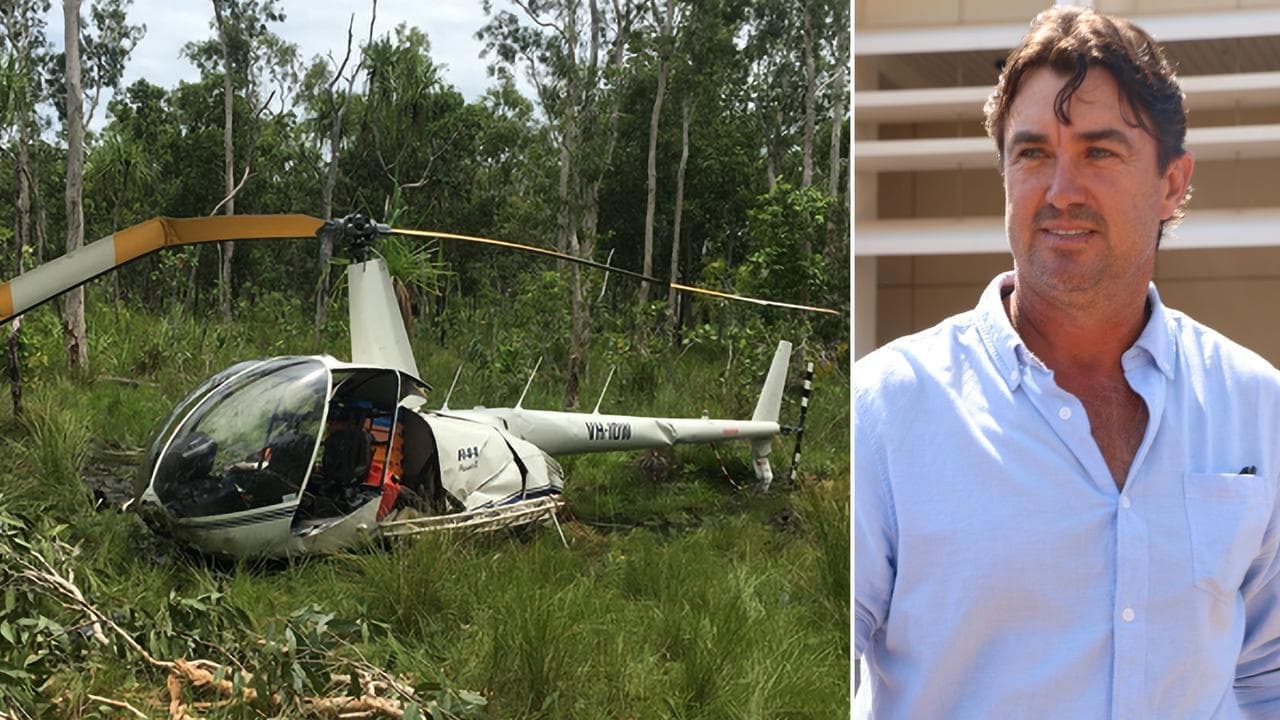The Statement
A Facebook post by a New Zealand user claims that telecommunications companies are setting up "camouflaged" cell towers to spy on communities.
The April 12 post is accompanied by a photo purporting to show the construction of a cell tower disguised as a pine tree, with the caption: "If it is safe, then why do they have to hide it?"
The post reads: "Now Telcos are setting up celltowers (sic) camouflaged as trees to spy on communities. No wonder people get concerned about having unwanted technology forced on us."
The post has attracted more than 44,000 views and has been shared more than 660 times.

The Analysis
Disguising cell towers as trees dates back to the 1990s and was pioneered by Ivo Branislav Lazic of South African telecommunications company Brolaz Projects and his colleague Aubrey Trevor Thomas. According to Wired magazine, Lazic and Thomas came up with the world's first palm tree cell phone tower, The Palm Pole Tower. The tower was made from non-toxic plastics and installed in Cape Town in 1996. The pair's original design concealed a mobile antenna with artificial foliage, which "typically resembles the fronds and leaves of a natural palm tree."
The Facebook post by a New Zealand user and the accompanying photo makes several claims: that telecommunications companies are setting up cell towers camouflaged as trees; that this is being done to spy on communities and that the "unwanted technology" is being forced on consumers.
The photo in the post gives no date, location or context. A reverse image search found the image dated back to October 22, 2014 and is featured on the website of a US company called NELLO. The Indiana-based firm describes itself as a "global leader in the design and fabrication of galvanized steel towers and poles".
On the page from which the photo is taken, more detail is given about a product called Monopine cell towers, which NELLO says is "a monopole disguised as a pine tree". The company says they have "become increasingly popular in the last decade".
The post's claim that telecommunications companies are setting up cell towers camouflaged as trees is true. NELLO's website says the popularity of monopine towers is because of aesthetic concerns.
"Due to more stringent zoning laws and the need for more towers in densely populated areas, wireless carriers have been forced to come up with alternatives to traditional lattice towers or monopoles," the website says.
"The monopine has been a popular solution as it is aesthetically pleasing and easy to install. In addition, another benefit is that it has a small footprint and requires minimal real estate to deploy."
For the claim that telecommunications companies are using the disguised towers "to spy on communities", AAP FactCheck sought comment from Vodafone New Zealand and industry body, the New Zealand Telecommunications Forum.
Tony Baird, wholesale and infrastructure director for Vodafone NZ, told AAP FactCheck in an email: "We have approximately 1600 cell sites around New Zealand, as well as some moveable cell sites (cell sites on wheels, or COWs) that we deploy when needed to temporarily boost to mobile coverage, such as at major concerts or during COVID-19 for hospitals to support an increased use of mobile phones.
"We do not disguise any cell sites as trees. This is only done for aesthetic or practical reasons, or when we can't use a moveable cell site (COW).
"As an internet services company our sole focus is on providing the best possible connectivity for our customers. We do not use cell sites for monitoring purposes, and there are no cameras or capability on cell sites to spy on people."
NZ Telecommunications Forum CEO Geoff Thorn told AAP FactCheck in a statement that cell sites have been disguised on "very rare occasions for aesthetic reasons".
"In every case, cell sites are positioned to provide cell phone and broadband connectivity for local communities."
Regarding the claim the towers are an example of "unwanted technology forced upon us", NELLO's website states that the monopine's popularity has been driven by demand "in densely populated areas" requiring wireless carriers to come up with "alternatives to traditional lattice towers or monopoles".

The Verdict
Based on the evidence, AAP FactCheck found the Facebook post to be false. While the post from a New Zealand user is correct in identifying the photo as a camouflaged cell tower, it misrepresents the reason for the artificial foliage. The photo is not from NZ but taken from the website of US company NELLO and its product, the Monopine cell tower.
Regarding the claim that telecommunications companies are using the disguised towers "to spy on communities", Vodafone New Zealand told AAP FactCheck the company did not use cell sites for monitoring purposes and there are no cameras or capability "to spy on people". Vodafone and industry body the New Zealand Telecommunications Forum both stated that disguised cell sites are used for aesthetic purposes.
For the claim the towers are an "unwanted technology forced upon us", NELLO's website states the monopine's popularity is due to demand "in densely populated areas".
False - The primary claims of the content are factually inaccurate or misleading.
* AAP FactCheck is accredited by the Poynter Institute's International Fact-Checking Network, which promotes best practice through a stringent and transparent Code of Principles. https://factcheck.aap.com.au/











